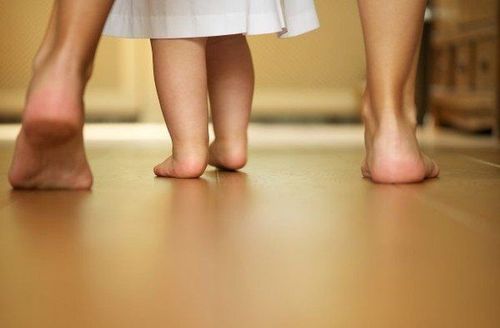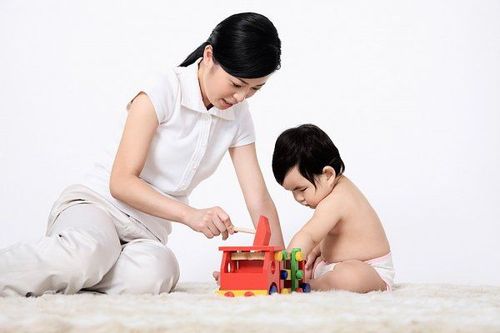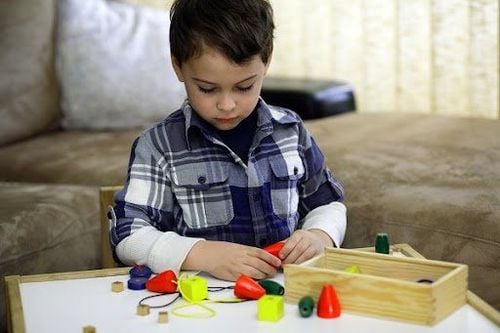This is an automatically translated article.
Article by Expert Nguyen Thi Yen - Speech therapist - Unit of Regenerative Medicine Clinic and Educational Psychology - Vinmec Times City International Hospital
We are all going through a pandemic together that no one has ever experienced before. Agencies and offices work from home or rotate work; Schools and educational centers are temporarily closed. This must have caused a lot of confusion as well as brought a lot of pressure to each person, each family, especially the family with autistic children.
Schools and educational centers are closed, which means that school intervention services are stopped and children with autism stay at home with a parent or full-time caregiver. The achievement of intervention goals or simply keeping the learning pace, retaining the skills children already have is a big challenge for families. Many parents worry that they don't know what to do with their children while they still need to complete the work of the office; How can family activities not become overwhelming or stressful for anyone in the family?
Understanding those concerns, in this article, I will provide a few ideas for activities at home that parents can apply to help children learn and play effectively. At the same time, it reduces the pressure and stress while working and taking care of a child with autism.
1. Schedule daily activities for autistic children during the pandemic The goal of building a schedule is to structure activities that help your child stay balanced and happy throughout the day. , reducing unwanted behaviors such as crying, tantrums when the schedule of activities is changed.
Steps to make a daily activity schedule:
First, write down all the activities that your child needs to do every day, from the time he wakes up to the time he goes to sleep. Next, list all the activities, gadgets, and toys your child loves by levels: like, accept, dislike. This will make it easy to prepare supplies, toys, and play ideas. Besides, adding rewards to activities children do not like will help motivate and stimulate children to participate more. Finally, visualize the activity and design it so it's easy for your child to see and follow the schedule as independently as possible. Note
After the child completes an activity, make sure to mark or put the picture of the activity away so that the child understands that the task is over. If your child has never used a visual activity schedule before, it may take a little longer for you to guide and your child will need time to get used to the schedule before he can use it independently. A small note in this section is that you make sure you set aside enough time for the REQUIRED activities every day. At the same time, you have a flexible time for unexpected events or activities chosen by the child without greatly disrupting the schedule or confusing the child.

Nuôi dạy trẻ tự kỷ tại nhà trong mùa dịch được nhiều người quan tâm
2. Some ideas for activities Arts and crafts activities
Benefits : Arts and crafts activities such as: drawing, playing with clay, collage will help increase concentration attention, encourage children to participate and share with their playmates. In addition, for some children with autism who have sensory needs in the hands (eg, fingertips), activities with playing with clay, playing with watercolors will help provide sensory input. extremely important to children.
Tips for making
Play with playdough: You can buy it at a toy store or make your own safe play dough with flour and food coloring. Prepare some more frames (for example, a star, a heart, a house, ...) and guide your child to play with clay such as: rolling, rolling, flattening, pressing according to the mold,... In addition, you can use a few straws that have been cut 1.5 - 2cm long and guide your child to plug in pieces of clay to create shapes such as: dog, tree, and figure. mushrooms,... Draw or color: Prepare your child with paper, crayons (colors, crayons) and guide them to paint the shapes they like. Instruct your child to draw hand prints and decorate them into funny animals such as rabbits, dinosaurs, peacocks,... If you don't have much time, print out the drawings and let your child do it on their own. color. Collage: After the children finish coloring or drawing, you guide them to use scissors and collage to create interesting products such as decorating pen boxes, decorating picture frames. You can also guide your child to cut basic shapes such as: circle, square, triangle, rectangle, ... and paste creative shapes based on available shapes such as: paste house from rectangle and triangle. Performing science experiments
Benefits: carrying out simple science experiments has the effect of attracting children's attention, helping children maintain the motivation to play, and at the same time encouraging imagination and thinking. children's thinking and learning ability. Scientific experiment activities, most of them will have many steps. Therefore, you should prepare images of the steps to perform the experiment and guide the child in each specific stage. Children will learn how to use and perform according to the available schedule, as well as contribute significantly to helping them know how to "tell" about what they have just done.
Suggestions for implementation
Experiment “The bottle can blow bubbles”:
You need to prepare a bottle of vinegar, a few balloons, baking soda powder, a clean bottle (eg an empty mineral water bottle). You pour vinegar into an empty bottle; Pour baking soda into the ball. Then carefully insert the mouth of the ball into the mouth of the bottle (take care not to let the powder fall into the bottle). After fixing the mouth of the ball and the mouth of the bottle, instruct the child to raise the ball so that all the baking soda powder falls into the vinegar bottle. At this point, a chemical reaction will occur and the balloon will be inflated. During the experiment, you should encourage your child to participate in most of the steps, from pouring vinegar into the bottle to lifting the ball so that the baking soda powder falls into the vinegared water. If your child is not yet able to sustain attention during a long activity, you can simply involve him in the final step of lifting the ball so that the baking powder falls into the vinegar and watching the balloon inflate.
Experiment “Milk Change Color”:
For this experiment, you need to prepare a little milk, a little dishwashing liquid, a little food coloring and a cotton swab. You pour milk into a plate, add a few drops of food coloring (depending on the child's preference). Then dip the cotton swab in the dish soap. Finally, you put the tip of the cotton swab with dishwashing liquid into the dish. A chemical reaction occurs that causes the milk and food coloring to spread around the cotton swab. Children will be extremely excited to see the many colors in the plate.
At the end of the experiments, instruct your child to clean up with you and record what he or she observes by writing, drawing or pasting pictures in the correct order of the steps of the experiment.
Read books with your child
Benefits : Children will learn to recognize and name pictures in books. Reading books properly increases children's ability to focus attention, thinking skills, and problem solving. At the same time, reading will help improve the quality of children's interactions with parents and caregivers.
Suggestions for implementation
Prepare a few books and guide your child to choose the one he/she likes best. You should pay attention to choosing story books that are suitable for your child's abilities, needs, and interests. For example: cloth books, flip books, books with thick and hard pages, books with few words, books with bright illustrations, etc. Be a person who reads “with your child”, instead of reading “for you” young". This means children have the opportunity to participate in reading and contribute their ideas to the story. Make sure you understand the story and structure of the book before you read it with your child.

Hướng dẫn trẻ tham gia các hoạt động làm việc nhà giúp trẻ phát triển các kỹ năng tự lập
Involvement in housework
Benefits: Guiding children to participate in housework activities both helps children develop independent skills and gives them the opportunity to be more active. For some children with sensory needs, you can integrate some therapeutic exercises in this activity such as: fresh plants, wipe tables,...
Suggestions for implementation
Depending on health, Children's age and ability, you can guide them to participate in a number of activities such as: cleaning the house, drying - folding clothes, cleaning the dining table, taking care of the garden,...
Outdoor activities
Loyalty Benefits: Children will both be active and learn and practice self-reliance and safety skills when going out on the street such as: walking on the sidewalk, walking next to adults,...
Practical suggestions show
Walk with loved ones in the park. Perform continuous movement exercises at the amusement park. Play catch, kick ball. You should pay attention to finding and letting children play in safe and easy-to-control areas such as in the playground, campus, yard, small park near the house.
Clinic and educational psychology unit of Vinmec Times City Hospital's Regenerative Medicine Center is a pioneer in applying scientific and artistic methods to assess and treat children with autism, bringing effective results. high.
Areas of educational intervention for children with autism at Vinmec: Clinical psychology - educational psychology; Special Education; Speech therapy; Meditation – therapeutic yoga; Music therapy; Art therapy
The team of doctors, therapists and teachers at the Center are trained at prestigious schools: University of Education, University of Social and Human Sciences - Hanoi National University, Academy of Sciences education management... and regularly learn to improve skills through short-term and long-term training courses at home and abroad with leading experts from the US, Australia, India, Italy.
Please dial HOTLINE for more information or register for an appointment HERE. Download MyVinmec app to make appointments faster and to manage your bookings easily.













